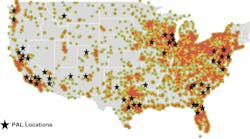Unfortunately for trucking, image counts more than fact
Did you know that trucks "are one of the last remaining sources of unregulated air pollution"? Neither did I. That's because diesel emissions have been closely regulated for over a decade. But don't tell The New York Times, which accepted and reported that statement as fact in a front page story last month on the newest round of emissions standards for diesels.
Although a single error in a newspaper story may not seem like such a big deal, I think this particular mistake ought to upset anyone connected with the trucking industry because it carries a message that goes well beyond the issue of emissions.
The Times considers itself to be without peer when it comes to accuracy and objectivity. It hires skilled reporters, gives them access to top-of-the-line research resources, and backs them up with editors whose main function is to ensure accuracy. Yet neither the reporter nor his editors ever questioned the accuracy of that claim, which was made by the director of an association of state air pollution regulators.
I don't believe The Times was out to smear trucking or that it has some hidden anti-truck agenda. I think the truth is far worse. Public perception of trucking is so bad that the entire news staff automatically accepted the characterization of the industry as an uncontrolled polluter.
Trucking has a serious image problem. Those in the industry know about its positive contributions to safety, environmental impact, and the country's economic health, but trucking conjures up a very different picture in the minds of the general public.
It may be possible to change that image, but it's a long process. For now, the wisest course may be to recognize the public's willingness to believe the worst about trucking and to act in ways that go against the grain instead of rising to the bait every time someone attacks the industry.
For example, the new regulations, which call for low-sulfur fuel, will add significant cost to the price of diesel. Predictably, ATA criticized the proposal as too costly. Unpredictably, the California Trucking Assn. (CTA) welcomed the new standards as a positive move to help trucking be more environmentally friendly.
As well-reasoned as ATA's argument may be, will its reaction derail the low-sulfur fuel plan? Not likely. But it will reinforce the industry's belching-black-smoke image. In contrast, CTA has taken the high road, which may help it beat back attempts to completely ban diesel trucks in that area.
Industry reaction to the revised hours-of-service rules offers another golden opportunity for trucking to shoot itself in the foot when it comes to public image. DOT is asking for public comments on the proposal. If the industry responds with nothing but criticism, it will easily and quickly be painted as greedy, self-serving, and unconcerned about public welfare.
The public's perception of trucking may not be fair and it may not be accurate, but there's no denying that it exists. We can't afford to continue acting as if it doesn't.


